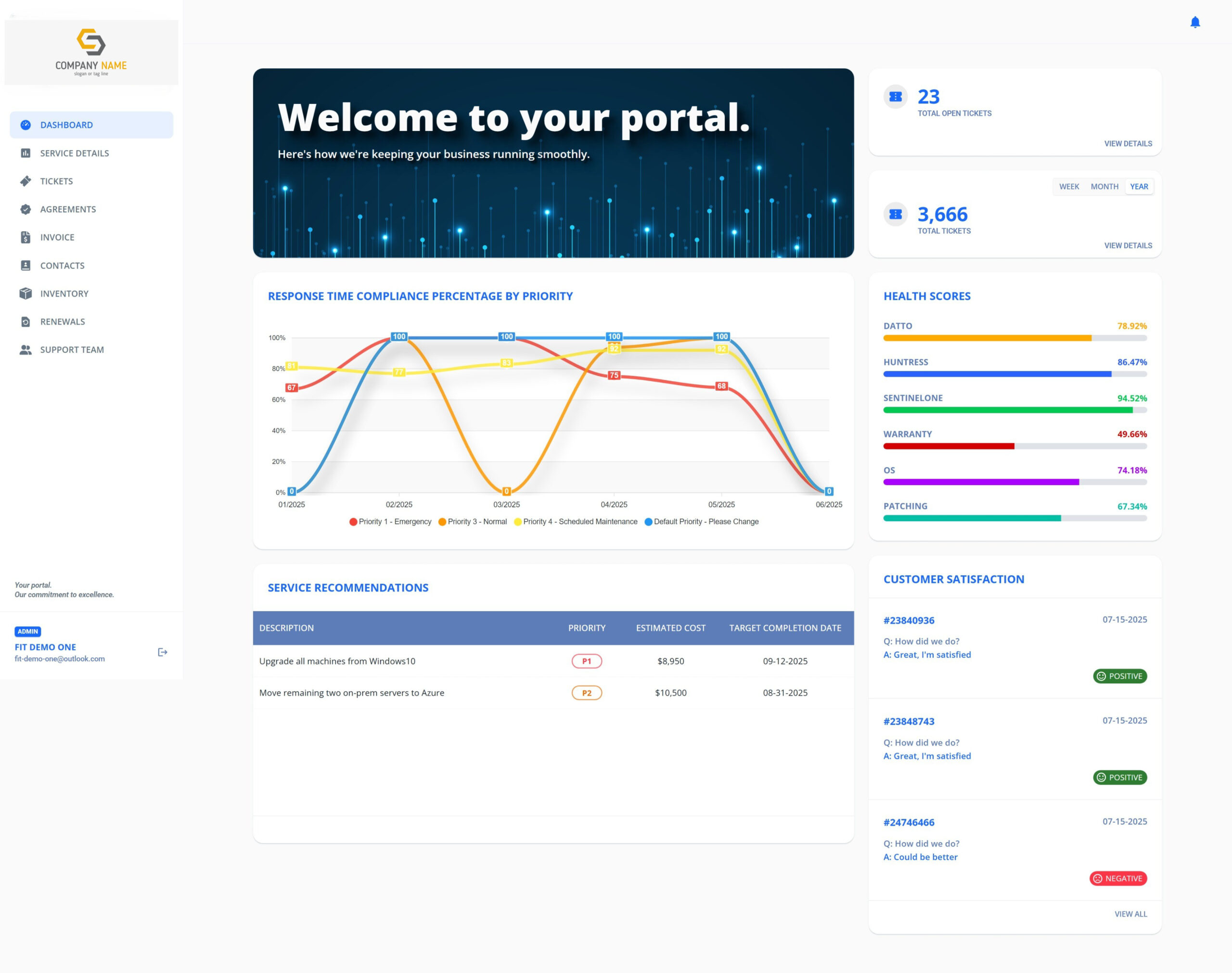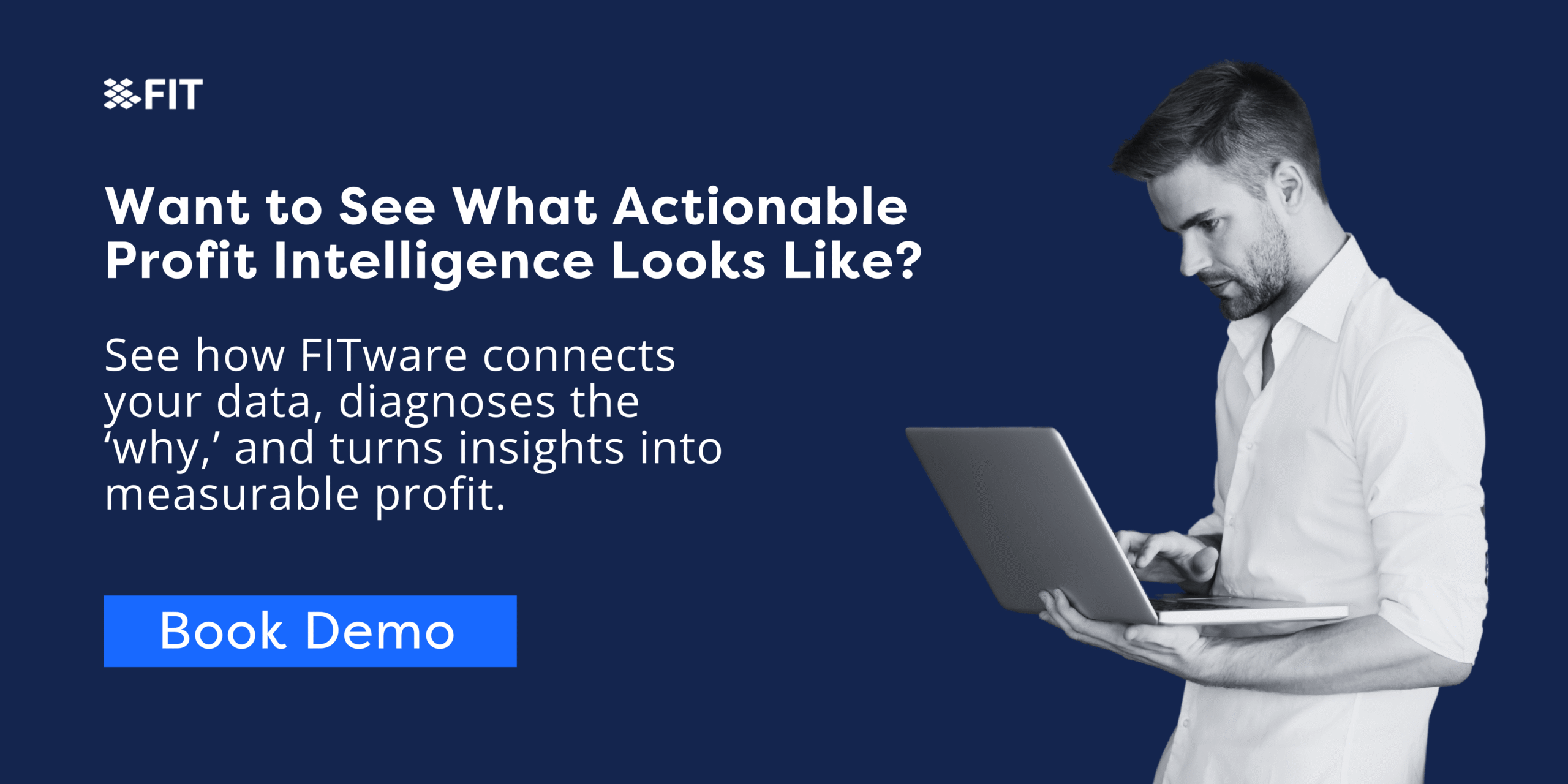Across the MSP industry, the client portal has become one of the most underutilized assets in the business. It’s meant to be a transparent, value-driven bridge between provider and client—a place where communication, reporting, and service quality come together. Instead, most portals end up being little more than a support ticket form and invoice list.
The issue isn’t the concept of the portal itself—it’s the execution. Most commercial solutions are designed for broad appeal, not differentiation. They serve the lowest common denominator, limiting customization and failing to showcase what makes your MSP exceptional. In an increasingly competitive, remote-first market, that lack of distinction comes at a cost.
A well-designed portal, on the other hand, can strengthen relationships, reinforce trust, and clearly demonstrate your unique value. It can save your team time, improve transparency, and even accelerate sales by showing measurable proof of performance in every interaction.
The Strategic Value of a Great Client Portal
A great client portal is more than a convenience feature—it’s a growth and retention engine. In today’s remote-first support environment, the portal is often your only persistent, branded interface with clients.
When used effectively, it can:
-
Increase client stickiness by creating consistent, visible touchpoints.
-
Build trust through transparency and shared data.
-
Save time for your staff by centralizing communication and status updates.
-
Reinforce your MSP’s unique value through metrics that competitors can’t easily replicate.
Differentiation is the holy grail of sales and marketing in a commoditized market. When prospects and clients can see your reliability, responsiveness, and results—not just hear about them—it becomes far easier to win and retain business.
Why Most Portals Fall Short
Off-the-shelf platforms such as CloudRadial, Humanize IT, and DeskDirector have done an admirable job in making client portals accessible to the broader MSP community. However, these tools are built for scale, not specialization. They prioritize a wide user base over depth, flexibility, and brand differentiation.
This means that while they work well enough for basic client communication, they rarely go deep enough to become strategic assets. Their standard modules—ticket submission, invoice viewing, and contact directories—are functional but uninspired. They rarely showcase the metrics that truly build trust: response times, CX scores, RMM compliance, or technician efficiency.
For MSPs focused on elevating the client experience and demonstrating operational excellence, this one-size-fits-all approach simply doesn’t cut it. When your portal looks identical to your competitors’, it becomes impossible to use it as a selling point—or as a meaningful tool for client retention.
What an Effective Client Portal Should Deliver
Every MSP portal should cover the basics, but the real differentiators come from the insights it provides and how well it aligns with your clients’ priorities.
Core Capabilities
-
Ticket creation, real-time tracking, and status visibility
-
Client access to invoices, payments, and billing history
-
Contact information and escalation paths for support
Differentiators That Build Trust
-
Quality metrics such as response times, resolution rates, and SLA adherence
-
RMM data covering backup, patch, and malware performance
-
CX feedback and satisfaction scores from tools like SmileBack or Hively
-
Technician efficiency data such as “techs per ticket” metrics
-
Breakdowns of hours by work type with drill-down detail
-
Inventory and warranty status with lifecycle visibility
-
License and renewal management by vendor and expiration date
-
Agreements and statuses tied to project or service outcomes
-
Recommended projects or improvements prioritized by business impact
Client-Specific Enhancements
-
Custom dashboards for multi-location or co-managed clients
-
Controlled access to display specific views by role or department
-
Procurement and ordering modules
-
Cloud application usage summaries
-
Compliance and audit reporting
-
New employee onboarding and identity management requests
A strong client portal doesn’t just report data—it tells a story of reliability, accountability, and partnership. It becomes the single source of truth your clients trust.
Driving Portal Adoption
Even the most capable portal only creates value if clients use it. The best MSPs make their portal central to every client interaction. For example:
-
Encourage engineers and account managers to start conversations with “Let me show you in your portal…”
-
Use the portal as the foundation for QBRs and vCIO meetings.
-
Send regular update emails linking clients directly to new recommendations or performance metrics.
The goal is to make the portal part of your daily client rhythm—an integral part of how you communicate and demonstrate ongoing value.
Why FITware Takes a Different Approach
While platforms like CloudRadial, Humanize IT, and DeskDirector helped standardize client communication, they exist as separate tools layered on top of your PSA and RMM. FITware was designed differently.
Instead of adding another disconnected interface, FITware integrates directly with your PSA, RMM, and financial systems to create a unified client experience. It surfaces live operational, financial, and performance data in one cohesive view—allowing you to demonstrate not just ticket activity, but business outcomes.
With FITware, MSPs can:
-
Present real-time service quality and profitability insights through a single interface.
-
Reinforce accountability and transparency with clients through verifiable data.
-
Showcase performance metrics that differentiate your service from competitors.
-
Strengthen QBRs and executive reviews with live, interactive reporting tied to actual results.
In short, FITware turns the client portal from an afterthought into a true differentiator. It helps MSPs communicate value clearly, retain clients longer, and compete more effectively in a crowded market.
If your current portal feels like a missed opportunity, it’s time to take a closer look at what FITware can do.




